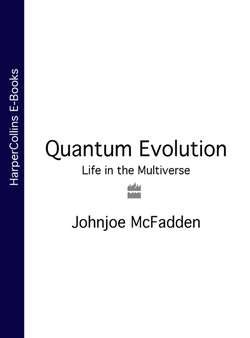Читать книгу Quantum Evolution: Life in the Multiverse - Johnjoe McFadden - Страница 15
JOURNEY TO THE CENTRE OF THE EARTH
ОглавлениеDescend into the crater of Yocul of Sneffels, which the shade of Scartaris caresses, before the kalends of July, audacious traveller, and you will reach the centre of the earth. I did it.
ARNE SAKNUSSEMM
These were the instructions that, in Jules Verne’s famous tale, led Professor Hardwigg and his companions to descend into ‘the great volcano of Sneffels’, following in the footsteps of the intrepid Icelander. Miles below the surface, they crossed a subterranean sea to discover a fabulous world of gigantic mushrooms, giant trees and extinct animals; flora and fauna from a world buried for millions of years. Scientist are now following in Professor Hardwigg’s fictional footsteps to discover a world – though not as fabulous as that created by Jules Verne – that harbours many strange and remarkable creatures.
It was generally believed that terrestrial ecosystems extended just a few metres below either the land surface or the ocean bottom. Deeper than this living organisms were thought to peter out, as nutrients became scarce. However, oil exploration drilling in the 1970s started turning up microbes from deep inside the Earth. It was initially believed that the bacteria represented surface contamination of the drilling equipment. This view changed dramatically in 1987 when the Department of Energy (DOE) in the USA started to explore the storing of nuclear waste below ground. To investigate the stability of potential sites, they drilled three deep holes into the sedimentary rock beneath Savannah in South Carolina and extracted cores from as deep as five hundred metres. To their astonishment, even the deepest cores contained abundant microbial flora with more than four hundred species of bacteria. Similar cores drilled into sedimentary rock seven hundred and fifty metres beneath the ocean have yielded similar numbers of bacteria. Although bad news for the DOE (who want to store their nuclear waste in sterile environments), it has provided microbiologists with a further habitat to explore. The deepest hole so far, a three-and-a-half-kilometre-deep South African gold mine has yielded rock-eating bacteria that can acquire energy from iron, manganese, sulfur, cobalt and possibly even gold.
Remarkably, the deep drilling has not yet hit any level where life peters out. In fact, in some studies the bacteria are more numerous the deeper the drilling. Most of these bacteria are thought to eat the buried organic matter trapped in the rock when the sediments were laid down millions of years ago. However, abundant bacteria have also been found to inhabit deep water-filled cracks of buried volcanic rock where little or no organic material has percolated down from the surface far above. In 1995, another DOE project drilled one thousand five hundred metres deep into basalt beneath the Columbia River valley in Washington State. The bacteria found were mostly methanogens, able to use hydrogen as an energy source to make methane, which they incorporate into their tissue. Methanogens are also common on the Earth’s surface. The intestinal tracts of animals, particularly ruminants, are full of methanogens; as are boggy waters where the methane they generate may spontaneously ignite, causing the ghostly will-o’-the-wisp flames that dance over the water’s surface.
Thriving microbial ecosystems may also be found below permanently covered ice-sheets. I have already mentioned the ice-covered Dry Valley Lakes of Antarctica as ecosystems totally isolated from the surface. A vast ice-buried habitat of Antarctica remains to be explored. Lake Vostok is a liquid-water lake, two hundred kilometres long, with an average depth of one hundred and twenty-five metres, which lies two miles beneath the Antarctic ice sheet. The lake was only discovered in 1974 and, as far as we know, has been buried for at least a million years. There are plans to drill down into the lake and sample its ancient waters. The danger is that the sampling will contaminate its pristine waters, so a drilling programme in 1996 stopped just one hundred and fifty metres above the lake surface whilst scientists consider the best way to proceed.
